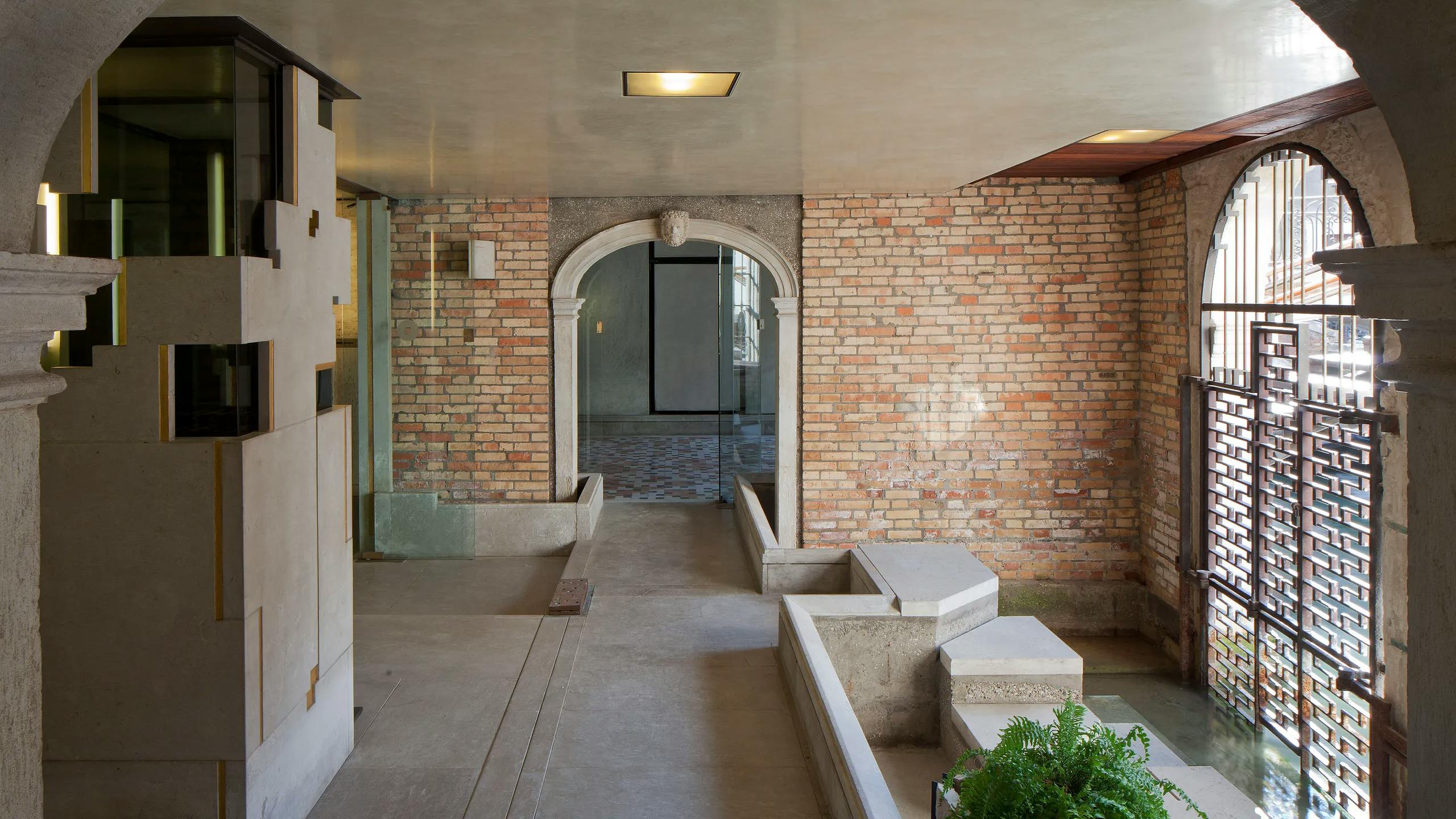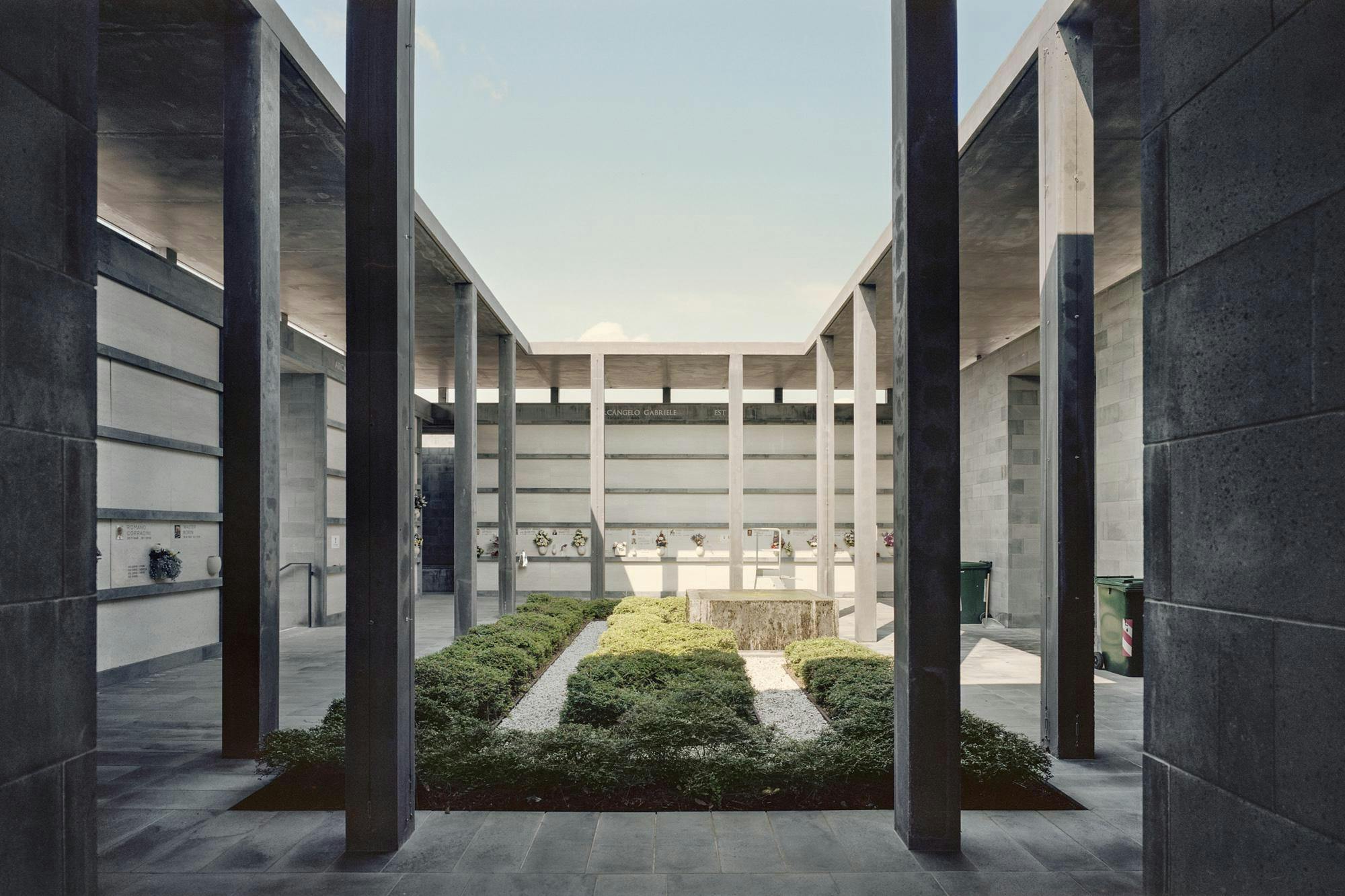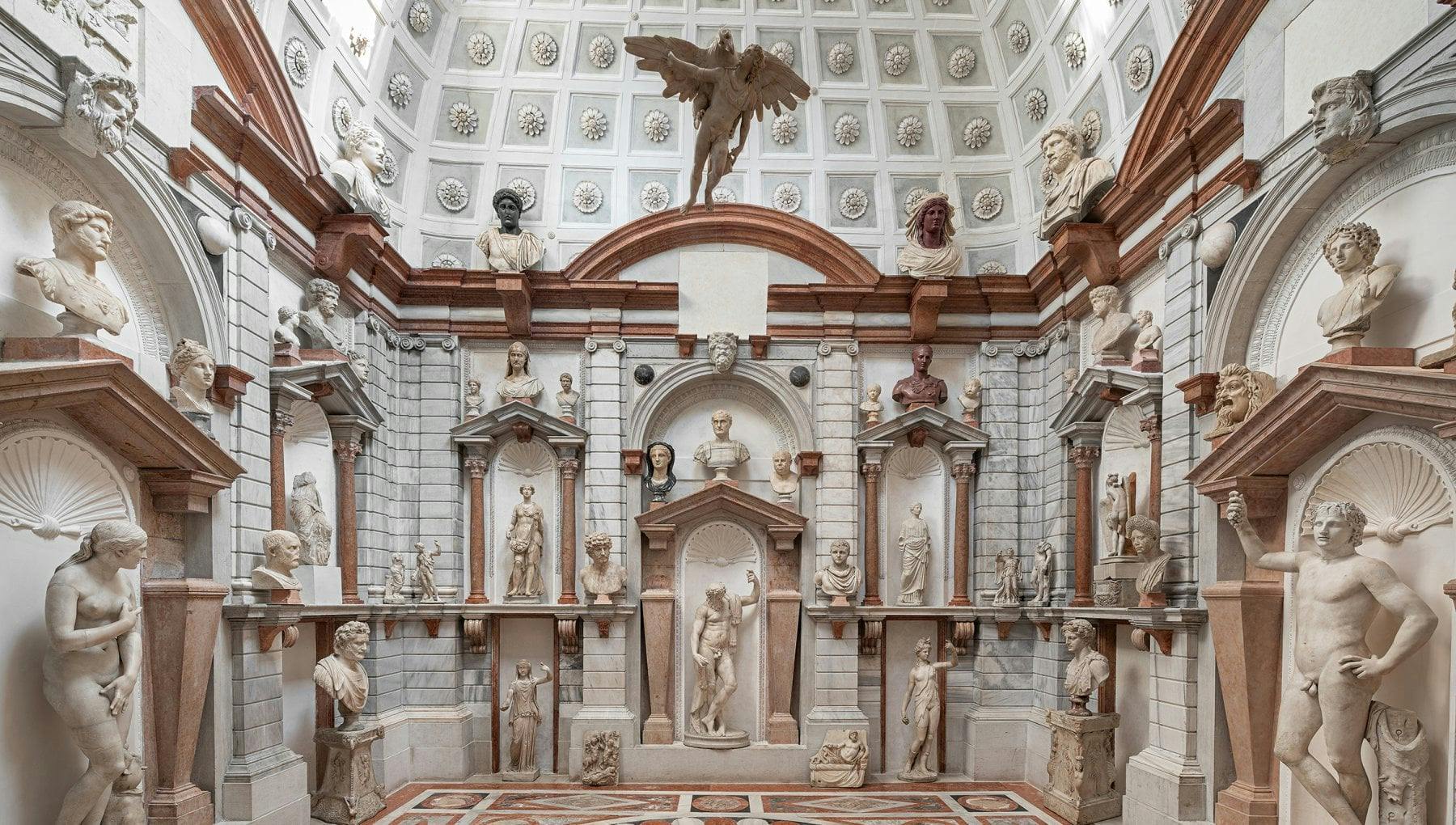
Negozio Olivetti
Tucked beneath the arcades of Piazza San Marco, the Negozio Olivetti is a jewel box of 20th-century architecture—Carlo Scarpa’s quietly radical redesign of a typewriter showroom for the iconic Olivetti brand.
Commissioned in 1957 by Adriano Olivetti as a Venetian outpost for his modernist typewriter empire, the space compresses Scarpa’s thinking into just 21 square meters: floating stone stairs, brass thresholds, modular display cases, and a shallow water basin that acts more like a mirror than a fountain. It’s less a retail environment than a spatial manifesto—an architecture of precision, detail, and delayed revelation.
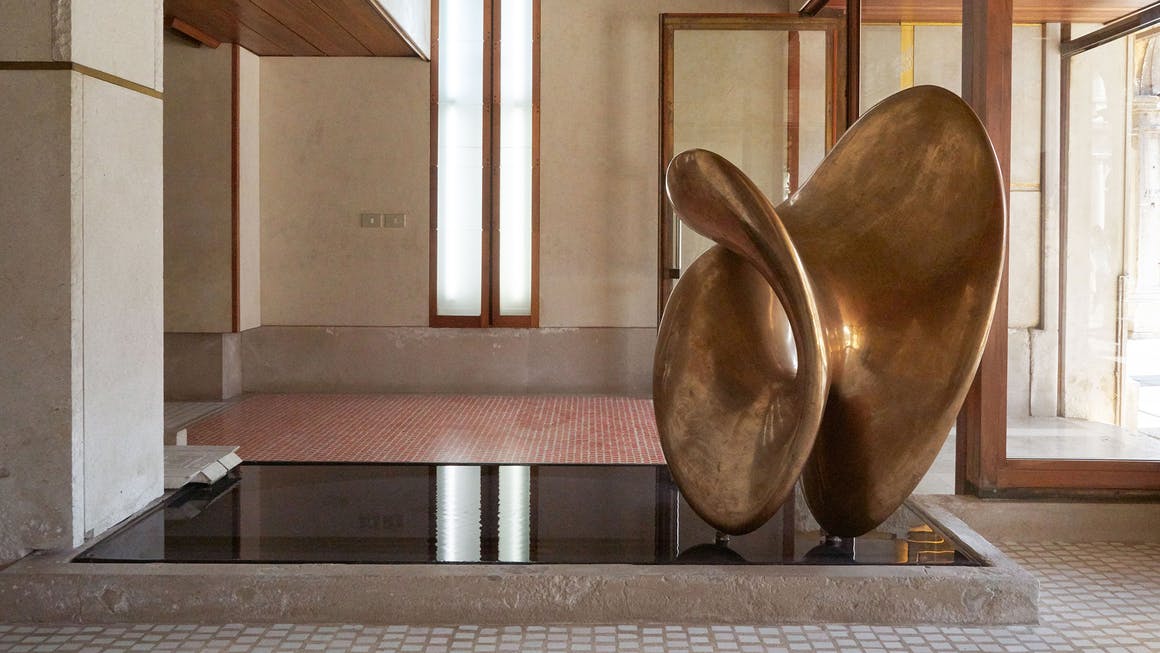
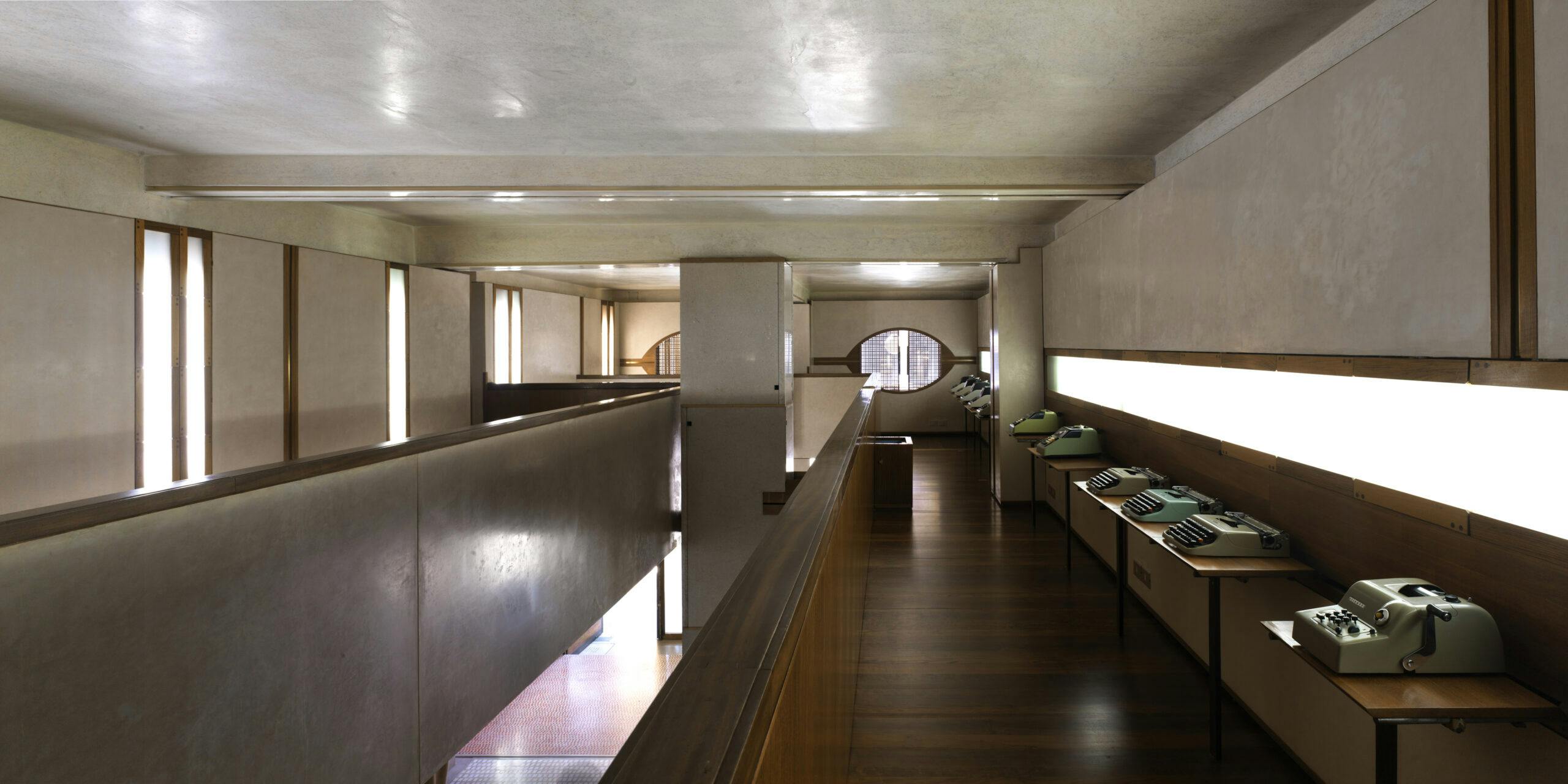
The showroom was never meant to function like a typical store. Olivetti, who saw design as a civic gesture, asked Scarpa to create something closer to a cultural embassy than a place to buy machines. Scarpa responded with a layout organized around procession and pause: you enter through a narrow portal, descend a few steps, and are pulled inward by the rhythm of suspended stair treads and vitrines. The materials—Aurisina stone, rosewood, polished brass—are used sparingly, but with exactitude. Every junction is intentional. Every surface modulates how you move.
The most subtle interventions are the most theatrical. The shallow pool near the entrance isn’t decorative—it refracts light upward, softening the compressed ceiling and reflecting fragments of the space back to the visitor. The machines are positioned on cantilevered platforms, each one isolated like a votive object. Even the display cases have mechanical slides and concealed hinges—details designed not to be noticed, but to be felt. Scarpa’s usual preoccupations—transitions, thresholds, the slow reveal—are all present, just tightened to a near-silent frequency.
After the shop closed in the late 1990s, the space sat dormant until FAI restored it in 2011, using archival drawings and original materials. What remains is not a nostalgic reconstruction but a rare intact Scarpa interior—unrenovated by taste or trend. For anyone interested in his work, it’s one of the few chances to study his language at 1:1 scale: all proportion, no spectacle.



